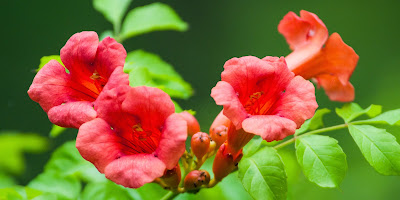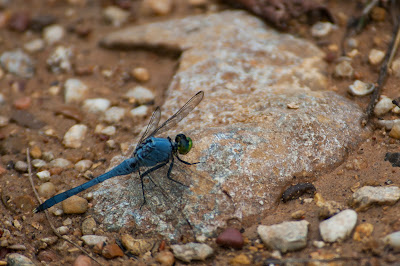The heavy spring rains we've been getting in North Texas have impacted my ability to get out and shoot in a couple of frustrating ways. The first is in the availability of good light with all of the clouds. The second has been in the availability of places to go, as rising water closed both LLELA and Murrell Park this weekend and Hagerman remains almost completely submerged.
The forecast called for a chance of sun this morning, and at least no rain. And from what I could determine online the Fort Worth Nature Center & Refuge still had some dry land. So that was my destination today.
I gambled that there would be enough clear sky this morning for a possible sunrise shot. There wasn't. And even if there had been, the gates to the refuge didn't open until 7 a.m. I was first in line, for what that's worth. And a young lady white-tailed deer greeted me along Buffalo Road with a mouth full of food.
While the refuge was open, several trails were closed due to high water. The Wild Plum Trail is still open, and has an inviting wooden arch to welcome hikers.
The start of the Crosstimbers Trail is completely submerged, and currently making a good roosting spot for snowy egrets.
Wet conditions certainly are good for the plants, including this trumpet vine.
Greer Island can still be reached via the levee crossing, which is where I found several patches of bull nettle. A naturalist at the visitor center told me the spikes on bull nettle stalks sting more than a cactus.
Widow's tear produces a lovely single blue flower. It's also commonly called dayflower due to the short life of the flower.
Greer Island has the highest concentration of dragonflies I've ever seen. I had to take care not to step on any along the trail, like this Great Blue Skimmer.
Click here for Part II.







No comments:
Post a Comment